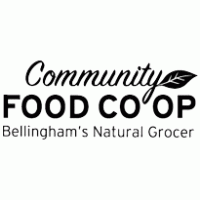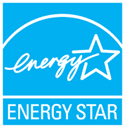

Sustainability Movement on WWU Campus:
An IMC/Marketing Plan to Increase Awareness & Encourage Behavior
How to Avoid Buying Disingeuous Products
The following steps present different strategies towards recognizing misleading labels and avoiding greenwashing:
-
Labels with no proof: Labels stating the product as eco-friendly or sustainable but contain no proof of this on the packaging
-
Vagueness: Labels making vague statements, such as "all natural," but do not contain any assurance for this statement.
-
Irrelevant Statements: This refers to products statements, such as "CFC Free" (which were completely banned 30 years ago), that hold no relevance towards a product being environmnetally friendly.
If you apply these steps and are still not sure about a product's label, GreenerChoices provides in-depth information on green conumer products and what their labels mean.
For personal care products, SkinDeep provides consumers with information on the ingredients and toxicology of these products.

Tips for Buying Sustainable Products Under a Budget
The following options presents easy and affordable ways to buy more environmentally friendly products:
-
Buy organic produce in season
-
Buy in bulk
-
Buy consignmnet or upcycled products
Belingham ofers many different consignment and upcycle specific stores that sell quality products:
Product Buying Guide
Our campus surveys indicate that students at Western are interested in buying sustainable products, but often find it difficult to distinguish sustainable products from those that make false or exaggerated claims, also known as greenwashing. The following guide provides information and resources to help students avoid buying products that mkake disingenuous claims and identify products that are sustainable, and affordable to college students.



Fair Trade Certified:
This label shows that the farmers and workers behind Fair Trade goods were paid fair wages and have opportunities for health care, housing and education. The Fair Trade label is attached to coffee, chocolate, cocoa, tea, fruit, rice, sugar, spices and a variety of clothing and crafts produced in developing countries.
Certified Humane Raised & Handled:
This label provides independent verification that the handling of livestock and poultry on farms in the program meet humane animal care standards. The standards include access to clean and sufficient food and water, protection from inclement weather, and enough space to move.
Leaping Bunny:
The logo certifies that companies have not tested their products on animals during any stage of development.
Marine Stewardship Council:
The logo indicates seafood that comes from fisheries that are striving to manage sustainably.
Non-GMO Project Verified:
This label creates an incentive to seed breeders, farmers, processors and manufacturers to adopt practices that reduce use of GMOs.
WaterSense:
The logo was designed to help consumers easily identify water-efficient products and encourage manufacturers to create more water efficient products.


Organic:
Products meeting requirements may display the USDA Organic seal on their packaging. Products that contain at least 70% organic ingredients may use the phrase “made with organic ingredients,” but may not use the organic seal. Processed products that contain less than 70% organic ingredients may not use the term “organic” other than to identify the specific ingredients that are organically produced in the ingredients statement.
Green Seal:
The label refers to certification standards that minimize the environmental and health impacts related to cleaning products, coffee, paint, windows, sticky notes, etc.
LEED:
The Leadership in Energy and Environmental Design (LEED) label represents a green building rating system for the design, construction and operation of green buildings.
Forest Stewardship Council:
The FSC sets standards to ensure that forests are being managed in a responsible way, and that products like timber, paper, and furniture are made sustainably.
Energy Star:
Overseen by the U.S. Environmental Protection Agency, the Energy Star logo indicates homes, buildings, appliances, computers lightbulbs, copiers, printers, furnaces, and many other products that meet strict energy-efficiency guidelines that help save energy and money.
Veriflora:
This label is given to flower growers who do not use “extremely hazardous” or “highly hazardous” agrochemicals. The VeriFlora label indicates that growers are converting to organic and sustainable crop production practices. The standard contains water and ecosystem protection measures to ensure that farmers are not damaging wildlife or habitats.
Eco-Labels
With over 200 eco-labels being used on products in the United States it’s nearly impossible to know what they all mean. Below are the top 12 Eco-labels to help you make more sustainable shopping choices:











